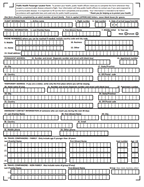World Health Organization (WHO) epidemiologist Marie-Roseline Darnycka Bélizaire on a MONUSCO helicopter flight between Beni and Butembo in the Democratic Republic of the Congo (DRC) on 1 January 2019.
International Health Regulations
While disease outbreaks and other acute public health risks are often unpredictable and require a range of responses, the International Health Regulations (2005) (IHR) provide an overarching legal framework that defines countries’ rights and obligations in handling public health events and emergencies that have the potential to cross borders.
The IHR are an instrument of international law that is legally-binding on 196 countries, including the 194 WHO Member States. The IHR grew out of the response to deadly epidemics that once overran Europe. They create rights and obligations for countries, including the requirement to report public health events. The Regulations also outline the criteria to determine whether or not a particular event constitutes a “public health emergency of international concern”.
At the same time, the IHR require countries to designate a National IHR Focal Point for communications with WHO, to establish and maintain core capacities for surveillance and response, including at designated points of entry. Additional provisions address the areas of international travel and transport such as the health documents required for international traffic.
Finally, the IHR introduce important safeguards to protect the rights of travellers and other persons in relation to the treatment of personal data, informed consent and non-discrimination in the application of health measures under the Regulations.
The responsibility for implementing the IHR rests upon all States Parties that are bound by the Regulations and on WHO. Governments are responsible, including all of their sectors, ministries, levels, officials and personnel for implementing IHR at the national level.
WHO plays the coordinating role in IHR implementation and, together with its partners, helps countries to build capacities.
The IHR require that all countries have the ability to do the following:
- Detect: Make sure surveillance systems can detect acute public health events in timely matter
- Assess and report: Use the decision instrument in Annex 2 of the IHR to assess public health event and report to WHO through their National IHR Focal Point those that may constitute a public health emergency of international concern
- Respond: Respond to public health risks and emergencies
To support countries in strengthening and maintaining their capacities for ensuring rapid detection, verification and response to public health risks, WHO develops and provides tools, guidance and training.
WHO’s support focuses on the priority needs identified by the WHO Regional and Country Offices, in order to help each country meet its IHR commitment. This includes:
- designating WHO IHR Contact Points at the headquarters or the regional level;
- conducting global public health surveillance and assessment of significant public health events;
- disseminating public health information to Member States;
- offering technical assistance to Member States;
- supporting Member States in their efforts to assess their existing national public health structures and capacities for surveillance and response, including at designated points of entry;
- monitoring the implementation of IHR (2005) and updating guidelines; and
- if required, determining whether or not a particular event constitutes a public health emergency of international concern (PHEIC), with advice from external experts.
If a PHEIC is declared, WHO develops and recommends the critical health measures for implementation by Member States during such an emergency.



/act-small/novelcoronavirus-160pix.jpg?sfvrsn=3dd8fd8a_17)







